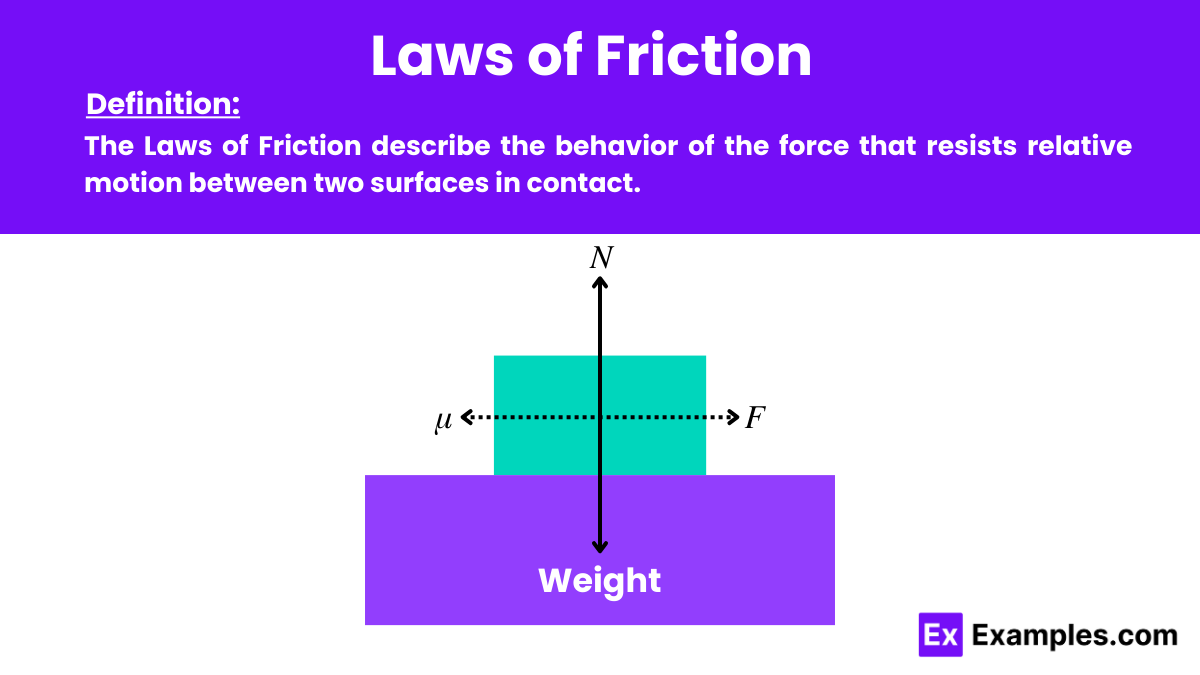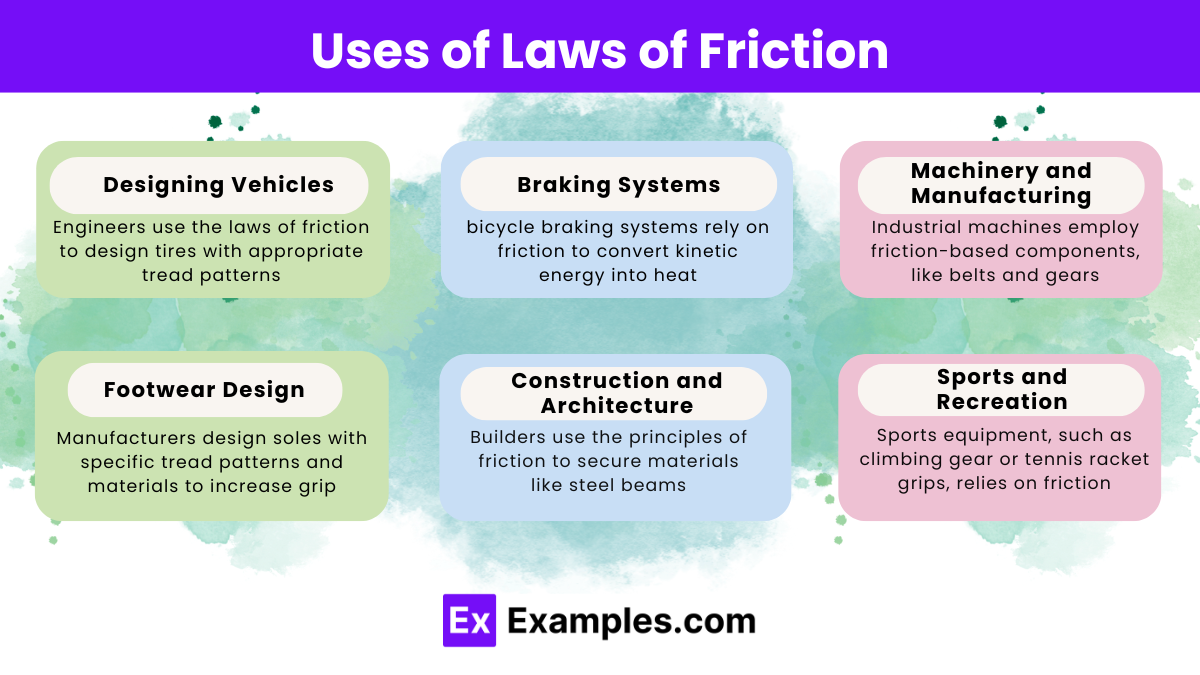What is the formula for calculating frictional force?
F = ma
F = μN
F = kx
F = mv²/r


In physics, the Laws of Friction describe the behavior of the force that resists relative motion between two surfaces in contact. These laws, fundamental to the study of physics, include that friction is directly proportional to the normal force, independent of the contact area, and that the coefficient of friction differs between static and kinetic states. They are crucial in understanding the principles of motion and the effects of forces on surfaces according to the laws of physics.
The laws of friction can be expressed through the following formulas:
Static Friction Formula:
The maximum static friction force before motion occurs is given by
Kinetic Friction Formula: Once an object is in motion, the kinetic friction force is given by
These formulas help describe the behavior of frictional forces between surfaces in contact.

The laws of friction describe how frictional forces between two surfaces relate to the normal force, distinguishing between static friction (no movement) and kinetic friction (movement).
Static friction is the resistance force that prevents an object from moving when a force is applied. It remains until the applied force exceeds this maximum static friction value.
Kinetic friction is the resistance force when an object is already in motion. It is usually less than static friction and remains constant during movement at a steady speed.
The frictional force is calculated using f = μN, where f is the frictional force, μ is the coefficient of friction, and N is the normal force between the surfaces.
The coefficient of friction is a dimensionless value representing how easily one surface slides over another. Different materials and conditions have distinct static and kinetic coefficients.
Surface texture influences friction by changing how much two surfaces interlock. Rough textures increase friction, while smoother surfaces provide less resistance.
Engineers rely on friction laws to design efficient brakes, tires, conveyor belts, and machine components, ensuring safe and reliable movement or secure resistance as needed.
Friction is essential for walking, driving, and holding objects. However, it also causes wear and tear in machinery, increasing energy consumption and reducing efficiency.
Lubricants reduce friction by creating a thin layer between two surfaces, preventing direct contact and reducing wear, noise, and energy loss in machinery.
Limiting friction is the maximum amount of static friction before an object starts to move. It represents the transition point from static to kinetic friction.
Text prompt
Add Tone
10 Examples of Public speaking
20 Examples of Gas lighting
What is the formula for calculating frictional force?
F = ma
F = μN
F = kx
F = mv²/r
What does the coefficient of friction (μ) represent?
The mass of the object
The normal force
The roughness between two surfaces
The velocity of the object
How does the normal force (N) affect the frictional force?
Increases the frictional force
Decreases the frictional force
Has no effect on the frictional force
Alters the coefficient of friction
Which type of friction acts on a stationary object?
Kinetic friction
Static friction
Rolling friction
Fluid friction
What is the maximum value of static friction known as?
Limiting friction
Kinetic friction
Rolling friction
Fluid friction
How does kinetic friction compare to static friction for the same surfaces?
Kinetic friction is greater
Kinetic friction is less
Kinetic friction is equal
Kinetic friction is variable
What is the relationship between the coefficient of kinetic friction (μk) and the coefficient of static friction (μs)?
μk > μs
μk < μs
μk = μs
μk and μs are unrelated
Which law of friction states that friction is independent of the area of contact?
Amontons' first law
Amontons' second law
Coulomb's first law
Coulomb's second law
What happens to the frictional force when the normal force is doubled?
It is halved
It remains the same
It doubles
It quadruples
Which law of friction states that friction is proportional to the normal force?
Amontons' first law
Amontons' second law
Coulomb's first law
Coulomb's second law
Before you leave, take our quick quiz to enhance your learning!

